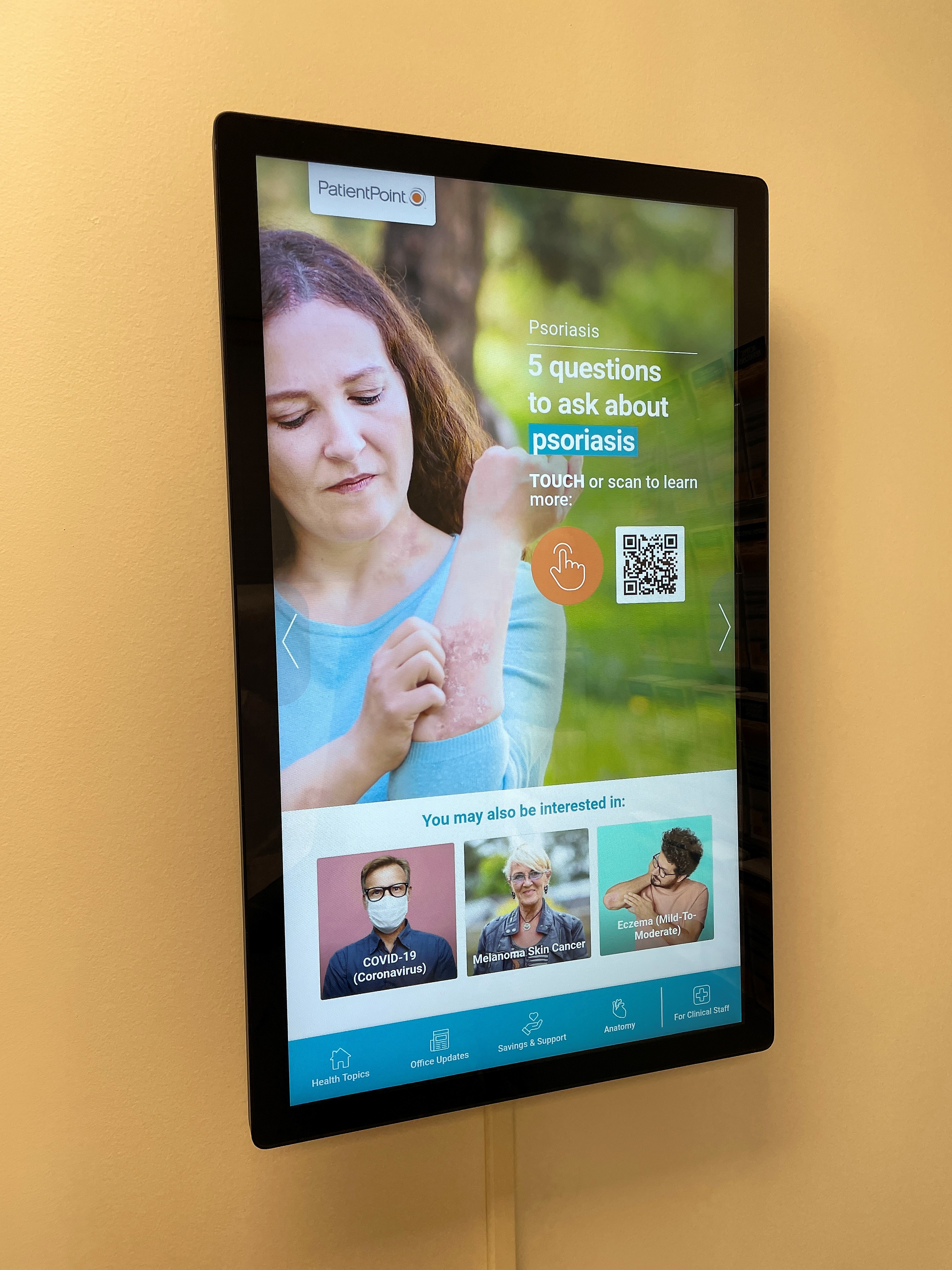There’s nothing quite like a visit to the doctor’s office to make you feel unwell or at least unclean (as if that exam table paper will prevent me from getting shingles). Add to that the general feeling of unease that accompanies most visits—I don’t know about you, but I don’t stop by the doctor’s office to swap cookie recipes—and it’s fair to say any distraction would be a welcome distraction.
During my most recent routine visit, I encountered such a diversion. Every once in a while, men of a certain age need to visit the dermatologist, point to various freckles and assorted skin tags, and let the professionals sort it out. So, there I sat, silently pondering the adequacy of my sunscreen use, when what to my wondering eyes did appear but an interactive touchscreen in portrait mode. Now, I could cinch up my paper modesty kilt and read about psoriasis, chronic hives, and cold sores.
It was a hypochondriac’s dream!
All kidding aside, healthcare digital signage, particularly in patient rooms, is a great idea. Patients can peruse a variety of health topics while they wait. That kind of engagement might lead to questions about other offerings, such as cosmetic surgery, or even referrals.

My dermatologist told me it’s been a very popular addition to their practice. However, the touchscreens are about more than sharing health tips. Doctors can access anatomy images, so it’s easier to illustrate issues like acne to teenagers. There’s even a whiteboard function, which can be used to annotate over images on the screen or keep the kids amused while the adults talk.
[Maximize Digital Signage with Content Planning, Management]
I know what you’re thinking: Who needs interactive digital signage when we have smartphones? Well, according to Statista, smartphone ownership for U.S. seniors (65+) more than doubled from 2015 to 2021—but it’s still only at 61%. That’s a lot of older folks waiting to be served who aren’t playing Roblox. You’ve got a captive audience, why not give them the opportunity to gain some knowledge and not focus on how long they’ve been sitting there?
Not only are interactive displays great for patients, they also represent a potential ongoing revenue stream for integrators. As we all know, content is king. PatientPoint was the communication platform at the office I visited, but there are plenty of options out there. Sure, some practices will be more hands-on than others, but I’m betting most would rather have someone else (read: you) manage the content.
[Editorial: Digital Signage Future Is Bright]
Installation, maintenance, content creation, managed services—healthcare digital signage could be just what the doctor ordered for a healthy systems integration business.

